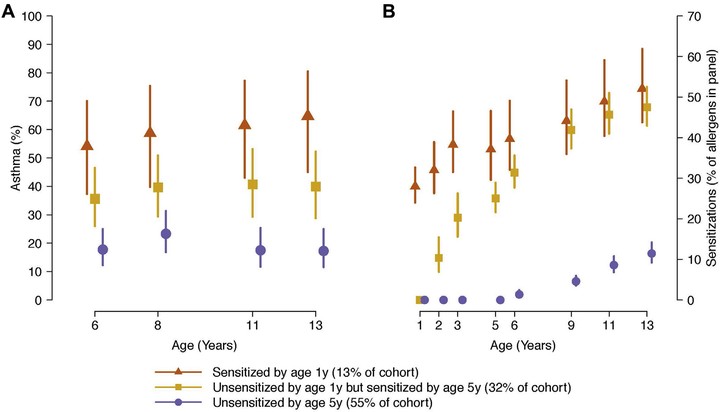
Abstract
BACKGROUND: Early life rhinovirus (RV) wheezing illnesses and aeroallergen sensitization increase the risk of asthma at school age. Whether these remain risk factors for the persistence of asthma out to adolescence is not established. OBJECTIVE: We sought to define the relationships among specific viral illnesses and the type and timing of aeroallergen sensitization with the persistence of asthma into adolescence. METHODS: A total of 217 children were followed prospectively from birth to age 13 years. The etiology and timing of viral wheezing illnesses during the first 3 years of life were assessed along with patterns of allergen sensitization. The associations between viral wheezing illnesses, presence and pattern of aeroallergen sensitization, and asthma diagnosis at age 13 years were evaluated. RESULTS: When adjusted for all viral etiologies, wheezing with RV (odds ratio = 3.3; 95% CI, 1.5-7.1), but not respiratory syncytial virus (odds ratio = 1.0; 95% CI, 0.4-2.3), was associated with asthma at age 13 years. Age of aeroallergen sensitization also influenced asthma risk; 65% of children sensitized by age 1 year had asthma at age 13 years, compared with 40% of children not sensitized at age 1 year but sensitized by age 5 years, and 17% of children not sensitized at age 5 years. Early life aeroallergen sensitization and RV wheezing had additive effects on asthma risk at adolescence. CONCLUSIONS: In a high-risk birth cohort, the persistence of asthma at age 13 years was most strongly associated with outpatient wheezing illnesses with RV and aeroallergen sensitization in early life.